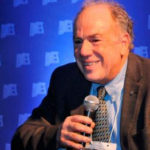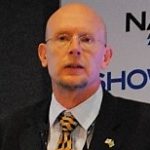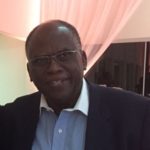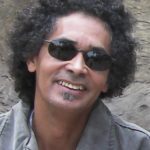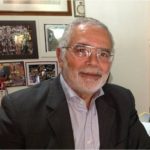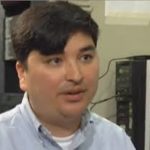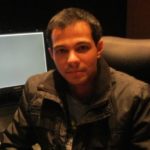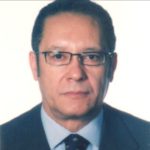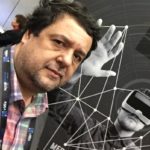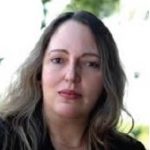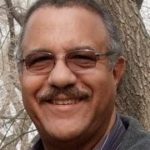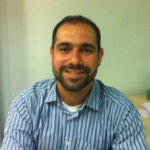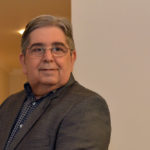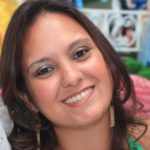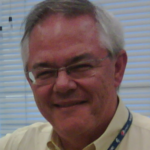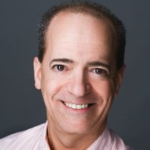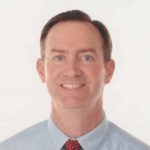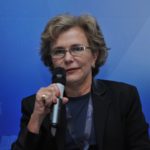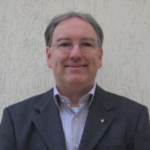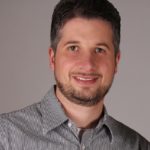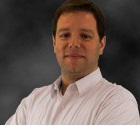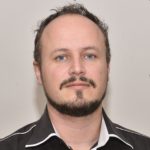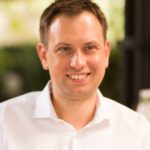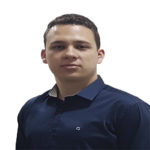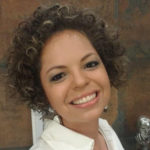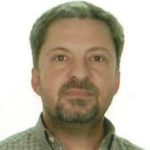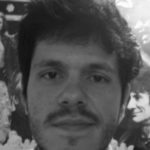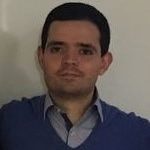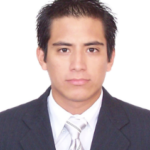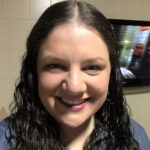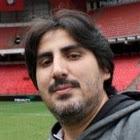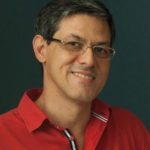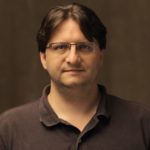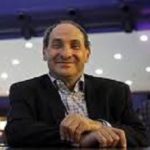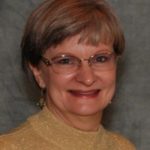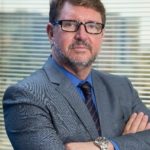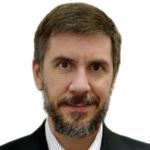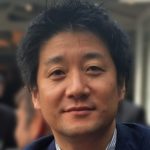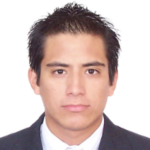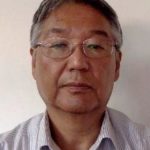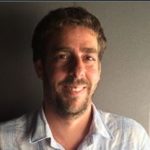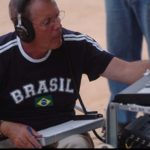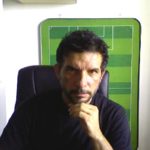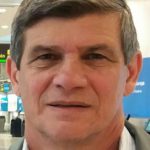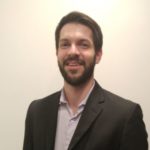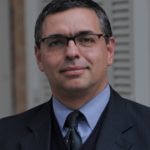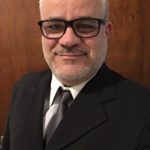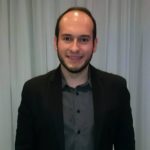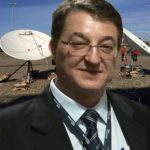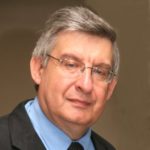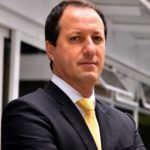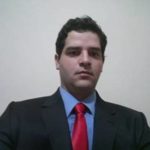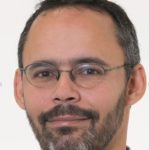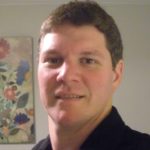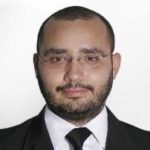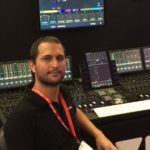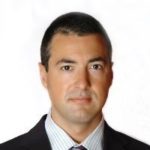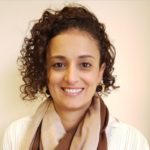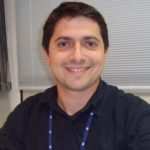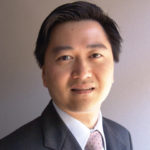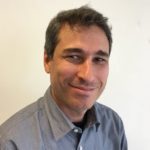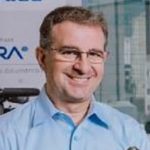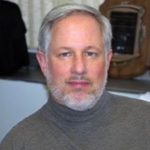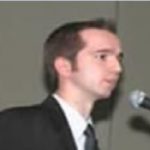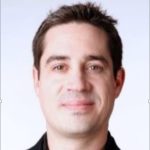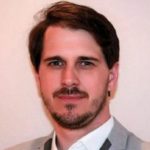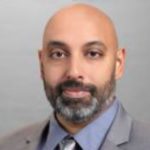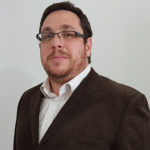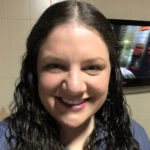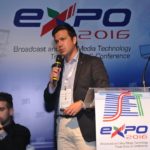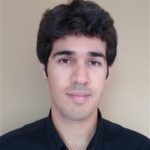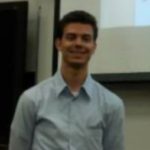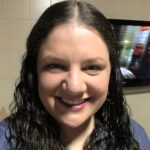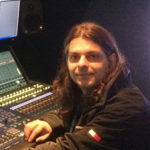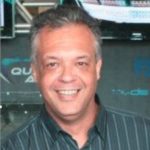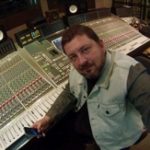|
|
Hot Session |
Room 13
Project UHD – Brazil: a Bridge to the Future
One decade has passed since the introduction of high definition television in Brazil and it is high time to consider the technical advances in pictures and sounds and plan how to facilitate their introduction in a world with progressively larger and more beautiful screens, but also in which personal devices become of utmost importance in people´s lives, and new formats of video services are made available at each moment This session will discuss this new world which awaits for us, and also include speeches about two special international efforts which are being conducted towards preparing for such future - the Ultra HD Forum and CTAs Wave Project ( Web Application Video Echosystem). We will also present how Project UHD -Brazil is being structured.
Chair: Olimpio José Franco, Superintendent of SET
Olímpio José Franco is superintendent and member of the SET Board of Former Presidents. He is an electronic engineer with an extensive career in the field of television broadcasting. In 1969, he joined the Padre Anchieta Foundation (Radio and TV Cultura, São Paulo), as a trainee, from where he left only in 1988, when he held the position of technical director. From 1988 to 2003, he was technical director of TV Jovem Pan. He has owned Olympic Engineering in Audio and Video Systems since 1985, working on audio and video projects and installations. He is the founder of SET, having served as president for three terms, as well as being technology director and vice president at various times. He is a life member of SMPTE and member of the Technical Module of the SBTVD Forum.
The UltraHD Forum
The Ultra HD Forum is bringing together market leaders from every part of the industry; broadcasters, service providers, consumer electronics, and technology vendors to collaborate on solving the real-world hurdles, and accelerating Ultra HD deployment.
Speaker: Skip Pizzi - Vice President, Technology Education and Outreach (NAB)
Skip Pizzi is Vice President, Technology Education and Outreach, at the National Association of Broadcasters (NAB) in Washington, DC, USA. His career has spanned the broadcast and digital media industries, working in audio engineering at NPR, and in audio production, media standards and technical policy at Microsoft. He was also an editor at Broadcast Engineeringmagazine, and a columnist for several other international industry publications. He remains a technology journalist, editor, author and trainer today. His most recent book is A Broadcast Engineering Tutorial for Non-Engineers, 4th edition, published by Focal Press. He is currently Associate Editor on the NAB Engineering Handbook, 11th edition, which will be published later this year. Skip serves as Vice-Chair of the Advanced Television Standards Committee (ATSC) Technology Group 3 (TG3), which is developing the ATSC 3.0 standard. He is also a member of the Board of Directors of the Ultra HD Forum. Skip is a graduate of Georgetown University, where he studied Electrical Engineering, International Economics and Fine Arts.
The WAVE (Web Application Video Ecosystem) Project
The WAVE (Web Application Video Ecosystem) Project, hosted by the Consumer Technology Association (CTA)™, aims to improve how internet-delivered commercial video is handled on consumer electronics devices and to make it easier for content creators to distribute video to those devices.
The project focuses on commercial internet video and web applications, and developing interoperability tools for global compatibility.
Speaker: Mike Bergman - Senior Director, Technology and Standards | Consumer Technology Association
Mike has been in the electronics industry for more than 30 years, starting as a chip designer and progressing to embedded systems, wireless communications and wireless digital multimedia. Prior to CTA, he held senior positions at JVC-Kenwood, Sirius Satellite Radio, and several other well-known tech companies in the computer and communications industries. He has two patents in semiconductor design, and has contributed to a number of standards including ATSC, DVB, NRSC and USB.
Project UHD-Brazil
Project UHD-Brasil brings together the various sectors of the audiovisual industry, from production to delivery, in a joint and voluntary effort to harmonize the introduction of such advances throughout the different media.
Speaker: Liliana Nakonechnyj, President of SET
LILIANA NAKONECHNYJ. President of SET. She graduated in telecommunications engineering at PUC-Rio. A large part of her professional life has been dedicated to deploying television distribution systems, initially analog, and later digital – terrestrial broadcasting stations as well as radio, satellite and fiber optics based contribution and distribution systems. Also, for many years, she was in charge of engineering support for broadcasters affiliated to TV Globo. She has always been interested in promoting new technologies, leading studies and tests for the introduction of digital television in Brazil between 1994 and 2006, and demonstrations and tests of UHDTV in more recent years. She represents SET at the IBC Council.
|
|
|
|
Room 16
Theory and Experiences of Digital TV Coverage
Theory and Experiences of Digital TV Coverage
The sucess of a DTV site project is proportional to the reception facilty and signal stability at the viewer's home. By the technical issue, it depends on de signal intensity and the C/N ratio at the arrival's point. We will discuss the tools and the methods taken to achieve a good project: trustworthy, robust, accessible prices, simple. It will be explored the topics: prediction, analysis, measurement, density versus intensity, SFN and Gap Filler.
Chair: José Frederico Rehme - Diretor da SET, Diretor da TVCI, professor da Universidade Positivo
José Frederico Rehme is SET Teaching Director, Coordinator and Professor of the Electrical Engineering and the Energy Engineering courses at Positivo University and Engineering Director at TVCi.
Theory and Practice of Digital TV Coverage
Evolution of the types of prediction tools;
Block/functional diagrams, SFN and MFN coverage areas;
Use and applications in DTV transmission and reception;
'Flying by instruments' ...with current frequency figures...
Speaker: Marcello Martins - Diretor Executivo na iTVX do Brasil Com. e Serviços de Telecom Ltda
Holds a degree in Electronics Engineering, with Specialization in Telecommunications (1989) and Business Administration, graduate qualification with an MBA from USP/FIA and an extension qualification from Manchester Business School/England (2001).
Specialization in satellite-based reception systems since 1982 and RF projects for terrestrial TV generators and repeaters.
Began his career in the technical area at Tupi Radio e TV network in São Paulo/1978. In the 1980s, he decided to move into business, where for more than 28 years he has worked in Industry, Commerce and Engineering Services for new electronic products for HD digital reception.
Currently executive Director at iTVX do Brasil Com. e Serviços de Telecom Ltda, a technical engineering projects company in the broadcasting and telecommunications field since 2008.
Associate member of SET/Sociedade de Engenharia de TV, since 1986; associate member of the GESC, FEA/USP, social support since 2001, associate member of the Digital TV Forum, SBTVD (2010 to 2012)
General aspects of a Digital TV project
Critical decision-making is necessary for the development of a Digital TV deployment project. The first is the choice of propagation model. The modeling is inserted as an element able to describe mathematically the behavior of the electromagnetic wave, as well as its losses. From this it is possible to establish coverage criteria, but are required analysis parameters of the same, to be chosen by the designer. Another aspect to be discussed is the importance of crossing the coverage data with field measurements. Finally, we will deal with the SFN network and gap-filler as a coverage optimization solution, with case studies.
Speaker: Anderson de Oliveira - RPC Telecom Projects - Globo affiliate - Paraná
Telecommunication Engineer by FURB Regional University Foundation of Blumenau Conclusion - 2006, Graduate in Management of People in Organizations by UNIPLAC - University of Planalto Catarinense - Conclusion 2009, Post Graduation in Computer Networks and Convergent Services in the Positivo University . Prediction of Completion in 2017. He has been working for 11 years in the Projects sector, with 7 years in the Telecom Projects sector of RPC - Affiliate Globo in Paraná.
Evolution of Predictions for Regulatory Aspects and Confrontation with Field Measurements
Analysis of the predictions of coverage of broadcasting stations used for approval by Anatel. The Mosaico System. What should be observed (Field Intensity, SNR, MER, etc.) in the field evaluation of Digital TV stations. How to evaluate a SFN for Digital TV.
Speaker: Paulo Eduardo dos Reis Cardoso
Doutorando / Especialista em Regulação
Universidade Estadual de Campinas / Agência Nacional de Telecomunicações
Holds a degree in Electrical Engineering from the FEEC-UNICAMP (2002) and a MSc degree in Electrical Engineering (Electronics) by DEMICFEEC-UNICAMP (2005). He is currently a PhD candidate in the LCVDECOM-FEEC-UNICAMP, searching Digital TV. Licensed from the post of Specialist in Regulating in the Anatel, where it operates in coordination of grants and resources to the provision, working with the licensing and amendment of technical characteristics of broadcasting stations. Previously, he served in the surveillance in broadcasters. He was responsible for the Technical Regulation to Broadcasting in Modulated Frequency and analysis of processes of technical feasibility for inclusion or amendment of the Basic Plan of Distribution Channels of Broadcasting in Modulated Frequency. He participated as an observer in the Federal Government in testing of Digital Radio Broadcasting, both in tests of American Standard - HD Radio, in 2008 and 2012, as in tests of the European standard - DRM, in 2010. He has worked as a telecommunications researcher of the Fundação Centro de Pesquisas e Desenvolvimento - CPqD.
Resource optimization for TV coverage: the cost-effectiveness as a criterion for setting parameters.
The choice of parameters to predict coverage are significant elements for the definition of TV network investments, since they define irradiance height, transmitter power and antenna models, with direct impacts on the feasibility of infrastructure deployment and operating costs . We will demonstrate real cases of projects considering these criteria and the results obtained and that can be replicated for the optimization of investments in this step of increasing the coverage of Digital TV.
Speaker: Luiz Ricardo Tonin - Coordinator of Broadcast Projects at SM Facilities
Luiz Ricardo Tonin is an electrical engineer graduated from Universidade Positivo and has 8 years of experience in the field of telecommunications engineering, with expertise in broadcasting, having worked in telephone and radio companies. He is currently Coordinator of Broadcast Projects at SM Facilities, an engineering company that provides technical, implementation and construction services to the broadcasting and telecommunications area.
He is a specialist in prediction software and in transmission technician projects, he actively participates in the development of new solutions for the analog switch-off and the migration of the 700MHz band.
Advanced ISDB-T SFN network planning - challenges and opportunities
To be highly effective when conducting broadcast planning requires up-to date knowledge of latest trends and technologies. Detailed knowledge about the huge variety of planning functionalities is as important as information about the technologies themselves. This presentation will introduce to planners and broadcast engineers necessary requirements they need for the complex tasks of modern broadcast planning, such as ISDB-T SFN planning.
Speaker: Milos PAVLOVIC - Sales Director Broadcast LS telcom AG, Germany
Milos Pavlovic has a diploma in Electrical Engineering/Telecommunications. He received his DIpl. Ing and MSc degrees from University of Belgrade, Faculty for Electrical Engineering.
Milos has been in the Sales & Marketing department of LS telcom AG since 2012, with more than 10 years of experience working in the broadcast industry. After joining LS telcom, he has taken over the responsibility for its broadcast customers globally.
|
|
|
Academic |
Room 12
Scientific Academic Panel – Morning Edition
Scientific Academic Panel – Morning Edition
This panel will present a set of scientific papers that have been submitted to the Call for Papers promoted annually by SET. The selected works will be published in the SET International Journal of Broadcast Engineering (SET IJBE) an international scientific journal whose objective is the diffusion of knowledge on communications engineering, especially of the broadcast areas and new media. The SET IJBE search current research that comprise the state of the art of these technologies.
Chair: Ronald Siqueira Barbosa - SET Educational Committee / Professor of Optical Communication, Television Systems, Principles of Communication and Antennas
Graduated in Electrical Engineering (Electronics) from the University of Brasília, Master of Science (MSc) from the Military Institute of Engineering of Rio de Janeiro. He has extensive experience in the broadcasting market as a consultant and participates in broadcasters and engineering associations coordinating various work groups. He is Assistant Professor II of the University Center - Institute of Higher Education of Brasília - IESB, since 2012, where he teaches the subjects of Optical Communication, Television Systems, Communication Principles and Antennas, and Adviser of Completion Works - TCC and participation in TCC Examination Boards at IESB. Current member of the SET teaching committee.
Face recognition techniques using artificial intelligence for audio-visual animations
Artificial intelligence application that uses face recognition for computer animation. It provides the producers simulate the face movements of the actors in a digital environment. All the inherent applications of the tool favor the area of computer-animated films and television series.
Speaker: Daniel Rodrigues Ferraz Izario - Master's student - Unicamp
Bachelor's at National Institute of Telecommunications (Inatel) / MG, Brazil - in Computer Engineering (2017), master’s degree student at Computer from State University of Campinas (Unicamp). He is currently a freelancer in the web development and his interests are software, game, web design and digital image processing, focusing on the languages javascript and python.
Social mobilization as a tool to support the switch off of TV and humanization of the process: the experience of Seja Digital in the Brazilians cities of the Rio Verde and Brasília.
This lecture shares the process of building the social mobilization experience of Seja Digital, a nongovernmental entity responsible for operationalizing the migration process for the digital TV signal in Brazil and the switch off. The Seja Digital promotes various actions to raise awareness and involve community, political and religious leaders in their campaigns, while encouraging them to develop tools and solutions within the communities where they live.
Speaker: Deisy Fernanda Feitosa - Regional Manager - Seja Digital
Graduated in Social Communication (UFPB), master in Digital TV (Unesp) and doctor (2015) in Communication Sciences (ECA / USP). She was a researcher at Lavid/UFPB and worked at Univesp TV, TV Cultura's multiprogramming channel. He currently works at Seja Digital, the company that manages the digitization of TV in Brazil. For eleven years he has been studying: digital TV, digital convergence and digital inclusion.
Isofrequency broadcast FM System, a rf spectrum optimization experience in Brasil (Jan 2017)
This article proposes the description of a 16 year experience of the Isofrequency FM operation in Brazil, starting in Rio de Janeiro (2000),inclusion of the technology as part of technical rules in the Brazilian Technical Standard(1999) , recognition by CONFEA (2014) as local intellectual property and operation by several FM stations, solving a coverage problem due to local geography, using same frequency of the main transmission system with no interference in common coverage signal areas and coverage extension using complimentary low power cels, Engineering Planning and Implementation challenges.
Speaker: Evandro Franco Tiziano - Director - Akron Technical Service ltda
Electrical, Electronic and Telecommunication Engineer
Technology,Labor and Education Specialist
Ex technical Director at:
Globo Radio Network, Jornal do Brasil Network, Manchete Radio Network, TV Manchete Network
Member in AERJ Technical Comitee - Rio de Janeiro Broadcast Association
AERJ Counselor
Winner in the 71° SOEA meeting, Engineering and Agronomy oficial week, sponsored by CONFEA - brazilian federation of engineering and agronomy.
Comparison of Terrestrial DTV Systems: ISDB-Tb and ATSC 3.0
This presentation shows the difference between the points of the physical layer of each system – ISDB-T and ATSC 3.0 – and makes a theoretical comparison of performance between bit rate and carrier-to-noise ratio.
Speaker: Victor Morales Dionísio - Researcher - Universidade Presbiteriana Mackenzie
Electrical engineer graduated at Mackenzie Presbyterian University in 2010 and Master of Science in Electrical Engineering and Computing at Mackenzie Presbyterian University in 2017.
Robustness against the effects of multipath in an ISDB-T LDM broadcast system using diversity at reception
This presentation will show the development and results for the simulations of the ISDB-T LDM system, with the Core Layer fully compatible with the traditional ISDB-T and the Enhanced Layer using the Non-Uniform Constellation 64-QNUC, in order to improve spectral efficiency, performance, robustness and useful bit rate, so that it is possible to use it for UHDTV applications. In order to reach these goals, in addition to the LDM technique, the LDPC encoder/decoder concatenated with the BCH were used. The SDR/GRC implementation was used and the reception diversity was achieved by the use of the MRC method. The tests were performed using the proposed system in environments with AWGN and multipath channels. With the use of the ISDB-T LDM system using diversity at reception it was possible to achieve gains for all the tested configurations.
Speaker: Ricardo Seriacopi Rabaça - Researcher - Universidade Presbiteriana Mackenzie
Ricardo Seriacopi Rabaça received his degree in Electrical Engineering with emphasis in Electronics and Telecommunications from Mackenzie Presbyterian University in 2013. He received his M.S. degree in Electrical Engineering and Computation from Mackenzie Presbyterian University in 2017. He is interested in research in the areas of Telecommunications, Broadcasting and Software Defined Radio.
A Technical Study on the Transmission of HDR Content over a Broadcast Channel
High Dynamic Range Television is a topic of current interest in academia and industry since can attribute the same level of realism without the need to increase the resolution. The reference end-to end HDR system is based on HDR10 System due to its encoding efficiency and visual quality. However, it cannot be directed apply for the current Standard Dynamic Range
television system. This paper makes a technical study about the system requirements to be considered for transmitting a HDR service in broadcast television and presents objective metrics in different coding scenarios regarding the HDR10 System and a
subjective assessment of the generated tone-mapped videos.
Speaker: Diego Arturo Pajuelo Castro - researcher - Unicamp
Diego Arturo Pajuelo Castro is a doctoral student at the Department of Communications (DECOM)
of the Faculty of Electrical Engineering and Computation (FEEC) of the State University of Campinas (Unicamp) and works as a researcher at the Visual Communications Laboratory (LCV). He worked for a number of years at one of Peru's leading Network Operations Centers (NOC), Telefonica, which provides digital television services to the Latin American Region. Currently, his research interests are in the area of new technologies for television and multimedia systems and as part of the master's dissertation he has presented a Video Encoding Proposal for High Dynamic Range (HDR) Television System.
Development and Optimization of Antennas for HDTV Reception
The development and optimization of antennas for reception of high-definition digital television (HDTV) will be presented. It will be discussed as was possible to develop the antennas in an efficient way without the need of very complex calculations through an iterative method using a software based on finite elements for simulations. Comparisons are made with respect to the main parameters related to these antennas in order to establish a better choice both from a technical and economic point of view.
Speaker: Kassia Toccolini - Master's student at Universidade Federal de Santa Catarina
She received the titles of Electronic Engineer (2016) by the Federal University of Santa Catarina (UFSC). She is currently in master’s degree in Electrical Engineering in electromagnetism area also at UFSC. She is part of Electromagnetism and Electromagnetic Compatibility Laboratory (MagLab) and Electromagnetic Compatibility and Engineering Group (GEMCO) at UFSC. Her areas of interest are electromagnetic fields, telecommunication and digital signals processing.
|
|
|
Content Production |
Room 13
Ultra High Definition and Super Ultra High Definition in Audiovisual Productions
Ultra High Definition and Super Ultra High Definition in Audiovisual Productions
In this panel we will discuss “Innovation and Disruptive Technologies” that point to transformations in progress and in the future of the television semiosphere, encompassing audiovisual productions on multiple platforms, multiple screens, multiple windows, multiple products and multiple services.
In addition to the technological focus of standardization and systems, "Production Cases" will also be presented, with their state of the art, workflows and aspect of the technical/aesthetic discussion and the reality of the Brazilian exhibition market.
Chair: Almir Almas, Professor Doutor, Universidade de São Paulo e Vice-diretor de Cinema da Diretoria da SET
Professor and researcher of the Department of Film, Radio and Television and the Program of Postgraduate Studies in Media and Audiovisual Processes; Coordinator of the Research Group LabArteMídia and Obted Observatory of ECA / University of São Paulo. PhD in Communication and Semiotics; Filmmaker / VJ; Artist of the Cobaia Art Collective. Deputy Director of Cinema of the Brazilian Society of Television Engineering. Author of "Televisão digital terrestre: sistemas, padrões e modelos". [email protected]
Visual effect's challenges in 4K era
Production Cases of the Conspiração Filmes, in its aspects of workflows, visual effects, advertising content, cinema, institutional movies and television.
Speaker: Claudio José Lima Peralta - Visual Effects Supervisor - Conspiração Filmes
With 20 years working with post production, Claudio Peralta signs as VFX Supervisor and Director at Conspiração Filmes, one of the main production houses on Brazil.
Claudio is the director of animated series "Planeta Palavra". Recently he co-directed the Santos Dumont's film for the Rio2016Olimpic Games.
Claudio is the VFX Supervisor of the latest 8 Motion Pictures produced by Conspiração Filmes. 4 of them were nominated for best Visual Effects on the brazilian motion pictures award (Grande Prêmio Nacional de Cinema Brasileiro), being the winner with “O Homem do Futuro” in 2012.
At Conspiração, Claudio started as senior flame artist, and after 1 year took the position as VFX Supervisor on comercials for clients such as Coca-Cola, Honda, Mitsubishi, Pepsi, Visa. Some of those for international campains. On this roll, Claudio’s participation extends to the entire process, starting on the budget planing, bringing his view on how to aproach the projects challenges concerning VFX, and finding solutions on how to adequate the films needs to it’s budget and delivery schedule. Aligning that with his on set experience and artistics post production skills, Claudio brings efficiency and quality to his films.
Workflow - technology, making and finishing
Workflow for digital and Ultra High Definition (4K) and Super Ultra High Definition (8K); The preparation for production, post-production and exhibition. Arrangement between filmmakers, technology and market.
Speaker: José Francisco Neto - DOT CINEMA
José Francisco Neto (Chiquinho) is a Founding Partner and Post-Production Supervisor at DOT CINEMA, a company he created in 2010 to work on the finalization of images for film and television productions.
He is a member of SMPTE (Society of Motion Pictures and Television Engineers) and of ABC (Brazilian Cinematography Association) where he actively participates in lectures and workshops for the dissemination of cinematographic technology.
With a professional career of 30 years, he researches and implements pioneering technologies and work systems in the Brazilian market such as digital color correction by area (1994), Live Streaming Media (1998), Stereo 3D and 4K (2010), and can accumulate knowledge and experience in the fields of image capture and processing, post-production and exhibition.
He participated in important and varied projects such as the professional update in non-linear edition of TV Globo SP and the creation of Recife Portomedia, an important pole of innovation in the world-renowned creative economy.
Case Study: O2Filmes
Aspects of the technical / aesthetic discussion about the use of Ultra High Definition technology in production. Analysis of several elements, such as HDR (High Dynamic Range), HFR and Resolutions. What are the direction and the state of the art from illustration of cases of O2Filmes producer.
Speaker: Luis Ignacio Barrague - Post production supervisor - O2 Filmes
Graduated in Radio and TV at FAAP in 2001. During the following years he worked in several companies performing different functions as a freelancer, where he acquired an overview of the production process and post-production. In the year 2006 he dedicated himself to post-production of feature films with experience in the transition from workflow from negative to digital. Since 2014 he has worked in O2 films as Post Production Supervisor focused on the entry and exit of media, including departments of digital laboratory, backup, conform, VOD and mastering. Always concerned with the best workflow to optimize the work, reducing costs and meeting the specific needs of each project.
State of the art of the exhibition market and the technological future of theaters
Reality of the Brazilian market in cinema technology. Reality of the technological possibilities of production and the technological park of the exhibition. The path of the new rooms.
Speaker: Luiz Gonzaga Assis De Luca - President of Cinépolis - Movie Theater Network
President of Cinepolis a network of movie theaters.One of the professionals who made the distributor Embrafilme the market leader for three consecutive years, in the late 1970s and early 1980s. In the following years, he turned to the exhibition sector, where held various positions at the Severiano Ribeiro Group until he became a superintendent, a position he held until August 2010. President of the Cinépolis network. One of the professionals who made the distributor Embrafilme the market leader for three consecutive years in the late 1970s and early 1980s. In the following years, he turned to the exhibition sector, performing various functions in the Group Severiano Ribeiro, until becoming superintendent director, a post he held until August 2010. He holds a degree in public administration from Fundação Getúlio Vargas de São Paulo and a doctorate in cinema from the School of Communications and Arts of the University of São Paulo. Launched the Digital Cinema books - A new cinema? (2004), The time of digital cinema (2009) and Digital cinema and 35mm - Techniques, equipment and installation of cinemas (2011), among others.
|
|
|
Innovation and Disruptive Technologies |
Room 16
5G and the Future of Mobility
5G and the Future of Mobility
What is 5G? ...
5G is the next generation of wireless networks that will provide higher speeds, more capacity and lower latency, will be able to carry billions of connected devices and things, will distribute intelligence!
But what does all this mean for users: individuals, companies, governments, researchers, hospitals, public security, etc? What real benefits should be expected from 5G, and when will the different benefits be available in the market?
This is the purpose of this panel: explain what is really 5G and IMT 2020 & Beyond, addressing mainly the technological, market \ economic aspects and the times of the projects.
Chair: Paulo Ricardo Balduino - TV \ Spectrum Planning Director - Brazilian Radio and TV Broadcasters Association - ABERT
Paulo Ricardo H. Balduino, born 1949, electronics engineer from the University of Brasília, married, with three children.
Oversees the work of the Brazilian Association of Radio and Television Broadcasters – ABERT, focusing on the policy, planning and use of the electromagnetic spectrum.
He worked at the Ministry of Communications as coordinator of international regulatory activities in different forums of the International Telecommunications Union – ITU and the Inter-American Telecommunication Commission – CITEL, having created, as far back as 1974 and 1975, the process for Brazil’s participation in the work of the ITU and the CITEL, including Brazilian commissions of studies designated at the time as CBR.s and CBTT.s, nowadays restricted and renamed CBC.s.
He has headed up Brazilian delegations at several meetings, assemblies and conferences of the ITU and the CITEL on a range of subjects, including planning for the use of the spectrum for different services. When the 12-GHz Satellite Broadcasting Service was in the planning phase, he presided over a group of experts who came up with the planning algorithms and the procedures for updating the plan.
He was a founding member of the “National Infrastructure Committee on Information of ANATEL (C.INI – ANATEL), where he was responsible for the Telemedicine Group, having carried out his activities to an advanced level of development. He has represented ANATEL on several forums and working environments on this issue.
He was Director and Co-founding Partner of the company, Spectrum Latino America, a joint venture with European company, Spectrum Strategy Consultants
Speaker: Lisa Hobbs - Commercial Portfolio Strategy - Compression
Solution Area Media - Ericsson
Lisa Hobbs joined Ericsson in 1997 after spending nine years in the satellite communications and video compression divisions of Scientific-Atlanta (now Cisco.) As Vice President, Compression Commercial Portfolio Strategy for Ericsson, she shares global responsibility for defining the direction of the compression portfolio across all of the market segments in which Ericsson has a presence, with a focus on market direction and ROI.
Speaker: Francisco Giacomini Soares - Senior Director of Regulatory Affairs
Speaker: Emilio Loures - Director Government and Public Policy - Intel
Emilio Loures is Director of Public Policy at Intel in Brazil. Previously led the Brazilian Corporate Affairs team, covering institutional programs in Education and related to the communities we work. In the company since 2001, the executive has worked on broadband and wireless broadband projects at Intel Capital and the Corporate Technology Group.
Graduated in Economics from UNICAMP and with a degree in Business Administration from COPPEAD / UFRJ and Fundação Dom Cabral from Belo Horizonte, Emilio was a business planning and development manager at AG Telecom, managing director of Miner Technology Group and a consultant to Monitor / MGDK and Companhia Vale do Rio Doce.
|
|
|
|
Room 12
Inventing the Future – Research & Development – R&D
Inventing the Future – Research & Development – R&D
Let's travel back in time and see what will happen in the future? Futuristic technologies begin with research developed in the laboratories of universities and research centers. This panel presents the prominent studies conducted by various research institutions.
Chair: CRISTIANO AKAMINE - Researcher and Professor - UNIVERSIDADE MACKENZIE/ SET
He holds a degree in Electrical Engineering from Mackenzie Presbyterian University (1999), a master's degree and a Ph.D. in Electrical Engineering from the State University of Campinas (2004/2011). He is a researcher at Mackenzie’s Digital TV Research Laboratory since 1998. He took an internship at NHK Laboratories for Research in Science and Technology (STRL) and was Visiting Specialist Professor at Unicamp's Faculty of Technology. Currently, he is a professor in Electrical Engineering and the Post-Graduate Program in Electrical and Computer Engineering (PPGEEC) of Mackenzie Presbyterian University and Coordinator of Mackenzie’s Digital TV Research Laboratory. He has a scientific grant of Productivity and Technological Development and Innovative Extension - Level 2 from National Counsel of Technological and Scientific Development (CNPq). He is also a member of the Board of the Brazilian Digital Terrestrial Television (SBTVD) Forum. He has several patents and several articles published and has experience in the area of Electrical Engineering, with emphasis on digital TV, digital communication, channel coding, embedded systems, reconfigurable logic and software defined radio.
The Trend of Broadcasting Technology -An Introduction of NHK STRL Open House 2017
NHK STRL’s annual event “Open House 2017” was held this May and attracted more than 20,000 visitors. This year, it exhibited 30 topics including AI and IoT as well as 8K technologies. Some technologies targeting for the 2020 Tokyo Olympic and Paralympic Games were also demonstrated. This presentation will explain some highlights demonstrated at Open House 2017 and overview the trend of broadcasting technology.
Speaker: Kenichi MURAYAMA
Senior Research Engineer
Advanced Transmission Systems Research Division
Science & Technology Research Laboratories
NHK
Kenichi Murayama joined NHK (Japan Broadcasting Corporation) in 2002. From 2002 to 2008, he has worked at the NHK Engineering Administration Department / Transmission & Audience Reception Engineering Center. From 2008 to 2013, he has worked at the Advanced Transmission Systems Research Division in NHK Science and Technology Research Laboratories (STRL) and has been engaged in research and development related to next generation of digital terrestrial broadcasting.
NAB Pilot
The NAB’s PILOT initiative is a coalition of innovators, educators and advocates dedicated to advancing broadcast technologies and cultivating new media opportunities via research, development, incubation, investment and education. A successor to the earlier “NAB Labs,” PILOT was formed in early 2016, and it brings together the broadcaster members of NAB with a new class of other stakeholder members sharing broadcasters’ passion and dedication to innovation. These PILOT members collaborate with broadcasters across the value chain to drive new opportunities in the industry.
Speaker: Skip Pizzi - Vice President, Technology Education and Outreach (NAB)
Skip Pizzi is Vice President, Technology Education and Outreach, at the National Association of Broadcasters (NAB) in Washington, DC, USA. His career has spanned the broadcast and digital media industries, working in audio engineering at NPR, and in audio production, media standards and technical policy at Microsoft. He was also an editor at Broadcast Engineeringmagazine, and a columnist for several other international industry publications. He remains a technology journalist, editor, author and trainer today. His most recent book is A Broadcast Engineering Tutorial for Non-Engineers, 4th edition, published by Focal Press. He is currently Associate Editor on the NAB Engineering Handbook, 11th edition, which will be published later this year. Skip serves as Vice-Chair of the Advanced Television Standards Committee (ATSC) Technology Group 3 (TG3), which is developing the ATSC 3.0 standard. He is also a member of the Board of Directors of the Ultra HD Forum. Skip is a graduate of Georgetown University, where he studied Electrical Engineering, International Economics and Fine Arts.
Research and Development of the Laboratory of Visual Communications of UNICAMP
In 1994, Prof. Yuzo Iano founded the LCV (Visual Communication Laboratory). Since then, the laboratory aims to provide academic research with solid results and solving very specific industrial technical problems. The LCV is a laboratory dedicated to developing state-of-the-art advances in technology through innovation and technological research for the benefit of humanity and the world’s technical society. Nowadays, in the area of TV and Radio technologies the following research has being developed: Performance of broadcasting services, Data compression, Video encoding, Digital image processing, Facial recognition, Artificial intelligence and Energy efficiency.
Speaker: Diego Arturo Pajuelo Castro - researcher - UNICAMP
Diego Arturo Pajuelo Castro is a doctoral student at the Department of Communications (DECOM) of the Faculty of Electrical Engineering and Computation (FEEC) of the State University of Campinas (Unicamp) and works as a researcher at the Visual Communications Laboratory (LCV). He worked for a number of years at one of Peru's leading Network Operations Centers (NOC), Telefonica, which provides digital television services to the Latin American Region. Currently, his research interests are in the area of new technologies for television and multimedia systems and as part of the master's dissertation he has presented a Video Encoding Proposal for High Dynamic Range (HDR) Television System.
Research and Development of the Mackenzie Digital TV Lab
The Digital TV Research Laboratory (LPTVD) of the School of Electrical Engineering of Mackenzie Presbyterian University conducts research and development dedicated to the broadcasting sector. LPTVD contributed to the development of several Brazilian Digital TV System Intellectual Properties and currently is carrying out academic research that may contribute to the definition of the next Brazilian digital TV system. This presentation mainly introduces the ISDB-T LDM, ATSC 3.0 modulator, laboratory/field tests, and technologies transferred to the productive sector.
Speaker: Julio Omi – Visiting Professor at the Digital TV Laboratory - Mackenzie Presbyterian University
Graduated in electronic engineering from the Polytechnic School at USP, and has a Master’s
in Engineering from the University of Tokyo.
He was Engineering Manager of the Radio Department at NEC do Brasil, and took part in the
ITU-R, in the TG-8/1 and WP-8F Groups handling the IMT-2000 systems, and also at CITEL.
He was a member of the Brazilian delegation to the Radio Communication Conferences in
1995, 1997 and 2000.
Took part in work at the Digital TV Laboratory of Mackenzie University, on the SBTVD project.
He is Visiting Professor at the Digital TV Laboratory of the Mackenzie Presbyterian University.
|
|
|
Content Production |
Room 11
The Audio Scenario in Dramaturgy
The audio scenario in dramaturgy
When we think of content production for drama, our references are numerous, ranging from Brazilian television programs to series and films of the international film industry.
Our viewer is no different. The references have changed, the platforms and types of audience sound experience as well as the expected standard of quality. However, many of the deadlines and features are kept in the broadcasting standard of recent decades. The panel aims to discuss, with Brazilian TV and Film professionals, the efforts to raise audio quality in this new context.
Chair: Rodrigo Meirelles - Sound Supervisor - TV Globo
Rodrigo Meirelles is Executive Supervisor of Audio of Globo. He holds a degree in Electronic Engineering and Computing, Recording and Phonographic Production and has a Masters in Education and Media. For 16 years in the audio market, he began his career as an engineer in music production studios in Rio de Janeiro, in maintenance, installation and projects of audio recording studios, he was an instructor and founder of the ProClass training center, a pioneer in official certifications In Pro Tools and Avid in Brazil, and in TV Globo, was responsible for the area of post-production from 2009 to 2014. Today he is responsible for the Entertainment Audio Production area (Estúdios Globo). He was a university professor for 8 years teaching courses in Phonographic Production, Audiovisual Production, Radio and TV and Graduation in Cinema.
Challenges of the mixing and finalization for Cinema and TV
The current context of feature films and series.
Speaker: Ricardo Cutz - Movie Mixer - 106 db
Ricardo Cutz is a founding partner of 106 db. Among the recent titles edited and mixed by the 106 db we have: Aquarius, by Kleber Mendonça Filho, Até que a sorte nos separe 3, by Roberto Santutti and Marcelo Antunes, and Operações especiais, by Tomás Portela. In 3 years of activities, they brought to the air more than 300 episodes of renowned series such as Magnifica 70, Vai Que Cola, The Canalhas, Tempero de família, A segunda vêz, Super Bonita and Questão de família..
Sound Capture in Cinema and TV
Developments and challenges in the pursuit of quality in a recording set.
Speaker: Geraldo Ribeiro - Técnico de Som Direto - Cinema (G3R) Direct Sound Technician
Quality, deadlines, processes and techniques.
The "sound of cinema" and the exclusiveness of the context of television production.
Speaker: Paulo Ricardo Nunes - Produtor de Áudio - Globo
|
|
|
Innovation and Disruptive Technologies |
Room 13
Innovations and News of Consumer Electronic Products
Innovations and News of Consumer Electronic Products
-Presentation ELETROS and its associated companies
-Evolution of the TV market since 2010
-Comparative of the semester sales volumes of SMART TVs and 4K TVs
-Accumulated sales of thin-screen TVs
-General information: analog signal shutdown, CRT TV estimate, extended band for FM radio.
Chair: José Francisco Alvarenga - Assessor - ELETROS / Audio and Video Segment
Business administrator, he retired in 2010 from Philips do Brasil Ltda., where he was the Manager of both Trade Finance and Overseas Relations, responsible for representing the company at government level and in international negotiations with the countries of the Mercosur, the Andean Community and other ALADI countries.
He is currently an advisor to ELETROS – the National Association of Electrical and Electronic Products Manufacturers, for the audio and video segment.
He sits on the fiscal council of the FSBTVD and PSS - Seguridade Social.
Co-chair: Alberto Deodato Seda Paduan - Consultant / SET
I studied Technician in Electronics in Santa Rita do Sapucaí, Operational Engineering, Business Administration and Post graduate in Economic Engineering in São Paulo. I have always worked as a radio and TV professional in the area of technical systems projects and, for the last 45 years, as an employee of TV Cultura de São Paulo. Currently I work in my company, providing consulting services, designing projects and monitoring facilities and assemblies in the same area of Radio and TV. I have been accompanying and writing information on the researches related to the television system in UHDTV since 2005. I participate in SET since 1992 where I wrote several articles for the magazine and where I acted as technical reviewer.
U.S. Television and Small Device Sales and Trends
The Consumer Technology Association surveys its members for sales, sales trends and forecasts for the future. CTA also surveys U.S. consumers. This presentation will be a short overview of U.S. television and small device ownership, plus trends for features like screens size, UHD and HDR capability.
Speaker: Mike Bergman - Senior Director, Technology and Standards | Consumer Technology Association
Mike has been in the electronics industry for more than 30 years, starting as a chip designer and progressing to embedded systems, wireless communications and wireless digital multimedia. Prior to CTA, he held senior positions at JVC-Kenwood, Sirius Satellite Radio, and several other well-known tech companies in the computer and communications industries. He has two patents in semiconductor design, and has contributed to a number of standards including ATSC, DVB, NRSC and USB.
Display Technology for TV sets
Speaker: Igor Krauniski - Igor Krauniski - Product Manager / TV - LG Electronics in Brazil
Graduated in Advertising and Propaganda from FAAP, with specialization in Business and Projects Management by FIA, he has 13 years of experience in the electronics segment and acts as product manager of the category TV at LG Electronics do Brasil, where he has dedicated special attention to the development of OLED technology in the Brazilian market in recent years.
|
|
|
Academic |
Room 16
The Communication Outlook for the Future of Broadcasting and New Media
THE COMMUNICATION OUTLOOK FOR THE FUTURE OF BROADCASTING AND NEW MEDIA
In this session, Brazilian Communication scholars will have the opportunity to analyze the changes in the audiovisual production chain, with an emphasis on content distribution and how the behavior of the audience is changing in the face of new consumption demands, both in audiovisual and radio. Will be analyzed the new platforms of audiovisual distribution by streaming, whether VoD or OTT, and the new tools of content delivery. This is a unique opportunity to exchange experiences with those who provide the support and tools for producing and distributing content.
Chair: Prof. Doutor Fernando Carlos Moura - Editor-in-chief of SET Magazine.
Dr. Fernando Carlos Moura is a Professor and Researcher at CIC.Digital Pólo FCSH/NOVA, New University of Lisbon (UNL) and, since 2013, senior editor of the SET magazine.
The possibilities of multiplatform radio content
The purpose of the exhibition is to present the various aspects of the impact of new technologies on Brazilian radio stations, analyzing the various forms of access to radio content on digital platforms, as well as differences among consumers.
Speaker: ProAlvaro Bufarahf. Me. - Coordinator of the Post-Graduate Course in Executive Production and TV Management at FAAP.
Journalist specializing in international politics and business administration. Master’s degree in communication and markets, reading for a doctorate in Fine Arts. Professor on radio, TV and journalism courses and coordinator of the graduate course in Executive Production and TV Management at FAAP. A professional with over 25 years of experience in the communication and broadcasting market, having worked for broadcasters like CBN and Rádio Globo (Globo Radio System), Sulamérica Transito (a traffic monitoring station of the Bandeirantes Group), Rádio Capital (AM/SP) and EBC (Radiobrás). He has also worked as a correspondent for Portuguese language services at Voice of America, DW, and SwissInfo.
TV Unesp as space of creation and laboratory for innovations in television technology
With five years on the air Unesp TV has been consolidating itself as a space for testing formats of programs and technological innovations that are impacting Brazilian broadcasting and imposing important challenges for private or educational broadcasters. In this session we will present the ways the radio station has come to face this moment of technological convergence and reaffirm the SET / TV Unesp partnership for the coming years.
Speaker: Prof. Dr. Francisco Machado Filho - Professor of Journalism / UNESP Bauru
15 years’ experience in producing and directing TV programs. Holds a Doctorate in Digital TV from
UMESP-SP. Specialist in Communication Advisory Management. University professor on social
communication courses
Change in audiovisual consumption
Discussion on the study of the strategies of self-promotion and placement of contents and formats produced by TV stations in a multi-platform environment and digital convergence.
Speaker: Prof. Me. Renato Tavares Junior - professor - Anhembi Morumbi / Cásper Líbero
Coordinator and professor of the course of Radio, TV and Internet of the University Anhembi Morumbi. Professor of Journalism, Advertising and Radio, TV and Internet courses at Cásper Líbero College. Idealizer and professor of the Postgraduate course in Strategies of TV Programming of the University Anhembi Morumbi. Bachelor in Radio and Television and Master in Communication Sciences from ECA-USP. PhD in Audiovisual Communication from Anhembi Morumbi University.
Television programming delivery (OTT) and linear TV
Digital platforms have changed the behavior of the viewer in relation to the ways of watching TV. How will (linear) TV broadcasters react to keep the audience?
Speaker: Prof Dr. Willians Cerrozi Balan - Professor of the Unesp Radio and TV Course
Graduated in Music from USC, a Master’s in Visual Poetics from Unesp, and a Doctorate in Digital TV from the Methodist University of São Paulo. Professor on the Radio and TV course at Unesp in the subjects of Radio and TV Management, Photography Direction, TV Program Direction and Organization of Production among others.
He worked at TV Globo in the Production, Engineering and Journalism areas, and at TBR Produções in advertisement production, videos and Distance Learning. He has experience in live transmissions via satellite and the internet. Internationally, he was involved in transmitting the FIFA World Cup, the Olympic and the Pan American Games, among others.
|
|
|
|
Room 12
Your Station Performance: Infrastructure Sharing & Energy Efficiency & Coverage
Your Station Performance: Infrastructure Sharing & Energy Efficiency & Coverage
How to optimize investments, reduce costs with existing infrastructures, often shared and achieve good station performance.
The infrastructure conditions of installation for the shelter of the equipment its power, air conditioning, transmission lines and connections, radiating system and tower, influence the coverage of your station? Does the passive intermodulation caused by the installation (rust on the tower, connectors, disconnected antennas, etc.) interfere with the coverage?
Energy efficiency in the performance of X equipment shelter sharing.
What are the challenges for the internalization of digital TV, using shared infrastructure?
Can City Hall Infrastructures be appropriate to receive the Digital TV system? What are the biggest challenges?
When the analog TV is turned off, will the new Digital TV station be ready to serve the desired coverage area?
The experience of broadcasters and service providers and equipment ..
Chair: Valderez De Almeida Donzelli- Director – ADTHEC Engenharia e Sistemas / SET
Holds a degree from the industrial school of engineering (FEI) in electronic engineering, power engineering and production. She obtained a Master’s in electrical engineering, defending the dissertation “Polarização Elíptica: Influência no desempenho de cobertura da TV Digital” (free translation, Elliptical Polarization: Its influence on the coverage performance of Digital TV”, and is reading for her doctorate with the survey "TV Digital: Disponibilidade de Sinal" (free translation, Digital TV: Signal Coverage), both from the Mackenzie University. She also holds a specialization in IT from FESP, ICT management from the FGV and Advanced Digital TV Systems, from INATEL. Technical Director of ADTHEC (www.adthec.com.br), a company offering consultancy, planning, design, research and analysis of risks and solutions for public and private sector radio, television and telecommunications stations, with the emphasis on the design and installation of digital and FM transmission systems. She actively participates in a range of Brazilian and international working groups under the coordination of Anatel, the Ministry of Communications, Universities, Associations and Research Centers. She began her professional activities in bio-engineering at the Heart Institute of the Clinics Hospital, lectured at the FAAP and worked for over years in several departments of the Padre Anchieta Foundation (Cultura TV and Radio, in São Paulo). In charge of the technical projects division, she coordinated the design and planning of the TV and radio network, testing and implementing new technologies, while managing the relations with prefectures, broadcasters, the Ministry of Communications and Anatel. She has headed up studies, tests and measurements involving the systems for implementing digital TV in Brazil, as well as the group that reviewed the regulations for sound and picture broadcasting services. She is currently deputy director for education and member of the editorial committee of SET, where she has also held the position of relationship and editorial director.
FEASIBILITY OF DESIGNING A PIM RATED BROADCAST SYSTEM
Passive Intermodulation (PIM) aspects will be discussed. What it is, causes, countermeasures and case studies. Its effects on antennas, towers, cables and accessories, as well as measurements will be approached in detail.
Speaker: José Roberto Elias - Commercial Manager - Dielectric e IFTelecom
With a degree in Electronic Engineering from UNICAMP in 83, and an MBA from the FGV
in 2005, he has vast experience in Brazilian and multinational companies in the fields of
Telecommunications and Broadcast. He currently holds the position of Sales Manager at
IF Telecom, and is also a Professor at the Fluminense Federal University on the MBA
course in Irradiant Systems and Digital Encoding
OPEX and sharing: the optimization of investments as an alternative to increase the coverage of Digital TV
He will present the experience of SM Facilities in installing repeaters, where the focus is on optimization and cost reduction, with actual cases of the options being considered or proposed using a range of structure and sharing models.
The talk will also deal with the different business models that can be used for expanding Digital TV coverage. Lastly, the discussion will cover the advantages of CAPEX and OPEX within the current scenario.
Speaker: Sérgio Luís Nogueira Martines - Executive Director - SM Facilities
Executive Director of SM Facilities, a company specializing in broadcasting engineering services.
Holds a Civil Engineering degree from UFPR and has an Electronics Technician qualification
from CEFET-PR, a specialization course in Works Management from CEFET-PR and an MBA in
Project Management from the FGV. He has been in the field of television for 26 years, especially
in transmission and reception systems, setting up TV generators and repeaters, and project
management for major live events. He is a consultant in project management, with experience in
the fields of IT, Energy, Finance and the Environment, among others.
Optimization of the Transmission System through analysis of installation, infrastructure and Digital signal coverage
Important considerations to be analyzed to minimize destructive interference of the quality of the digital signal transmitted.
Antenna installation site, what is the best option?
As the support structure (tower and bracket) and the shape of the antenna installation can impair the quality of the transmitted signal;
Sharing possibilities (tower x antenna) is it worth?
Speaker: Ramiro Frugoli Franco - Project and Development Engineer - Ideal Indústria e Comércio de Antenas LTDA
Graduated from Pontifical Catholic University - PUC MINAS and MBA in executive management of business by PUC-Minas, since 2006, he has participated in dedicated studies focused on the Brazilian Digital broadcasting system, together with a team of Technicians and Engineers, who developed the first radiating circular / elliptical polarization system in Latin America. He currently works as an engineer for the development of special and customized radiant systems for applications to the digital terrestrial transmission system.
Relocation of channels, Execution process ,Success stories
Exposition of the processes involved in the execution of channel remanagement and reporting of field experiences.
Speaker: Andre Vinicius de Andrade Araujo - Project Manager - Seja Digital
Telecommunications Engineer graduated from UNESA in 2006, with an MBA in Project Management by FGV in 2014, working in Television Engineering since 1996 in the areas of Operation, Maintenance and Transmission Systems Projects for pay-TV and open TV companies. Currently holds the position of Deployment Manager in the channel relocation of Seja Digital.
SFN & GAP Filler: Concepts, practical applications and the importance of care with planning and infrastructure
Over the past few years we have seen the use of SFN increase considerably in Brazil, but there are still many questions about the topic. This lecture simply and directly addresses the basic requirements of this type of network, and also shows that as important as understanding what SFN is, are the necessary care with network planning and the necessary infrastructure so that the good results of the implementations are obtained.
Speaker: Glenn Zolotar - Systems Engineering Manager - Hitachi Kokusai Linear
Technician in Electronics by the Technical School of Electronics "Francisco Moreira da Costa". Graduated from the University of North Texas with an MBA in Strategic Management. Responsible for technical training in digital TV transmission of Hitachi Kokusai Linear.
|
|
|
|
Room 11
Audio 3D and Immersive
ADVANCED AUDIO SYSTEMS. IMMERSIVE AUDIO
Immersive audio, already a reality in theaters, presents itself to broadcasting as a way to make possible a significant evolution in the sound experience. Technologies like Dolby Atmos Home and MPEG-H 3D Audio present themselves as solutions for multiple platforms and are already being adopted by the world. In terms of tools, Avid has released in the last few months an important update on the Pro Tools platform, with native integration for mixing in Dolby Atmos.
In this context, the panel aims to go beyond the theory, discussing the experiences already made with the format and presenting the immersive audio as something feasible both in the sense of content production, as well as at the tip, in the experience of the viewer. Aware of the limitations imposed by 5.1, which made the format unfeasible for the vast majority of Brazilians, audio professionals will present in the panel, besides the feasibility and technological execution, the creative opportunities that immersion gives to all involved in the creation of audiovisual content.
Chair: Nelson Faria Junior - Managing Partner of Media Intelligence Group
An electronics engineer with an MBA in Finance and Marketing, he worked for 37 years at TV
Globo in the Engineering Operations Department. He was also Advisor on Innovation and
Technology at TV Globo. He is currently Deputy International Director of the Brazilian Society of
Television Engineering, and Technology and Innovation Consultant at Consultoria Inovtec and
Chief Executive Officer of Petchannel Comunicação SA.
IMMERSIVE AUDIO EXPERIMENTS WITH BRAZILIAN CONTENT
What content producers and viewers gain from immersive audio - From the experiences with Globo content, we find the opportunity for a sound evolution that has not reached a significant number of viewers since the launch of the TV stereo.
Speaker: Rodrigo Meirelles - Globo TV’s Sound Executive Supervisor. Head of the Audio Producer's team
Rodrigo Meirelles is Executive Supervisor of Audio of Globo. He holds a degree in Electronic Engineering and Computing, Recording and Phonographic Production and has a Masters in Education and Media. For 16 years in the audio market, he began his career as an engineer in music production studios in Rio de Janeiro, in maintenance, installation and projects of audio recording studios, he was an instructor and founder of the ProClass training center, a pioneer in official certifications In Pro Tools and Avid in Brazil, and in TV Globo, was responsible for the area of post-production from 2009 to 2014. Today he is responsible for the Entertainment Audio Production area (Estúdios Globo). He was a university professor for 8 years teaching courses in Phonographic Production, Audiovisual Production, Radio and TV and Graduation in Cinema.
DOLBY ATMOS FOR THE HOME
Technology that takes the audio experience of movie theaters to homes to create a powerful audio, which moves around the viewer.
Speaker: Rafael de Castro - Regional Director, Latin America Dolby Laboratories
IMMERSIVE AUDIO PRODUCTION WORKFLOW
The alliance between Avid and Dolby to deliver more integrated workflow between the technologies of these companies to work on Atmos. Let's look at the concept of Atmos, and the different models to work in this format. A closer look at RMU and how to integrate it to have a fluid workflow. We will know the tools of Avid and Pro Tools ecosystem to create content for Atmos and how to structure a session for this format.
Speaker: Eduardo Andrade - Avid Pro Audio Solution Specialist Brazil
MPEG-H AN EXCELLENT SOLUTION AS AN INTERACTIVITY TOOL, OPENING NEW CREATIVE POSSIBILITIES
For VR to be a success, the user must feel that he is an active part of the entertainment experience rather than just a passive viewer. Of course, perfect images are part of the equation for a compelling VR experience. But another central ingredient is an authentic sound that is done by surround, and even more, for three-dimensional audio (3D).
It is the goal of audio and media technologies to create a truly realistic audio presence in virtual reality. The audio solutions developed by the division's engineers and researchers provide support at every point in the production chain. Be it at the beginning, where an intelligent microphone processing algorithm helps you capture 3D sound or, in the end, when consumers enjoy their virtual world with Fraunhofer Cingo that enables surround and 3D sound reproduction on headphones.
Speaker: Dr. Alfonso Carrera - Director of Marketing and Business Development, Fraunhofer IIS
Alfonso Carrera obtained his Ph.D. at the University of Erlangen-Nuremberg (Germany) and his executive MBA at Instituto de Empresa (Madrid). He works as director of business development for Fraunhofer IIS - Audio & Multimedia.
|
|
|
Technology and Business |
Room 13
Ultra HD – Production and Consumer Market impacts
Ultra HD - Production and Consumer Market impacts
The panel will address the aspects of UHD content offering and its impact on the business model of digital platforms and consumer market.
Join and deepen the questions:
- How do distribution technologies enable delivery of UHD content across multiplatform networks?
- What is the standardization status of UHD (HDR / WCG / HFR / Immersive Audio) technologies?
- What are the UHD technologies that increases the engagement of media consumption?
Chair: Leonardo dos Anjos Chaves, Gerente de Projetos em Novas Tecnologias de Transmissão, TV Globo
Currently, I am the Transmission Technologies Manager at TV Globo and coordinator of Technical Module in Forum SBTVD. I had the BSc in Electronic and Computing Engineering at Federal University of Rio de Janeiro (UFRJ), and MSc. of Electrical Engineering at the same university. I've got the MBA Management in Catholic University in Rio de Janeiro (PUC-Rio).
Who has UHD TV?
This presentation will bring the UHD screens penetration figures in the Brazilian market and projections of the domestic market.
Speaker: Giselle de Liz - PoS Tracking Manager - GfK
For more than 2 years she has been working at GfK as a PoS Tracking ( monitoring of durable goods sales in the retail) in brown segment, which includes Televisions, Portable Audio and Automotive Sound.
Graduated in Business Administration, Post-Graduate in Market Intelligence by FIA and currently pursuing an MBA in Marketing Management from ESPM.
Experience of 08 years in the durable goods industry in areas of Market Intelligence, Competitive Intelligence, and Consumer Insights in companies such as Motorola (Telecom), Samsung (TI) and Groupe SEB (ElectronicsLaptops).
The challenges of UHD distribution
This speech will present an overview of the standardization of existing UHD technologies (HDR, WCG, HFR, Immersive Audio ...) and examples of UHD profiles on different digital platforms or broadcasting (8K satellite case in Japan, 4k in ATSC 3.0 South Korea) . It will also address impacts on HDR and HFR rates.
Speaker: Gustavo Marra - Vice President Solutions and Bus Dev - ATEME
Graduated in Telecommunication Engineering, Post-graduated on IP Video Networks and with a MBA on Project Management, Gustavo has been working for 15 years in the media industry, currently at the position of VP of Solutions and Business Development at ATEME, being responsible for all aspects of solution Evangelism, system architecture and design, and promoting video delivery solutions to service providers and broadcasters.
UHD - subjective impacts on the viewer
This presentation will bring some studies of subjective impacts on the viewer / consumer of UHD technologies. Level of engagement, enhancements and points of attention for those who are exploring the production and distribution of these technologies both in the domestic environment (broadcasting) as cinema.
Speaker: Carlos Watanabe - Director for Emerging Markets at Dolby Laboratories
Carlos Watanabe is Director for Emerging Markets at Dolby Laboratories, the global leader in audiovisual entertainment technologies. For more than 50 years, Dolby has created audio, video and voice technologies that transform entertainment and communications on mobile devices, movies, the home and work.Carlos is an Electrical Engineer graduated from the State University of Campinas (UNICAMP), with an MBA from the Ross School of Business at the University of Michigan. He has more than 20 years of experience in technology, media and entertainment companies, and senior management consulting.
UHD - impacts on the business model
In this presentation we will analyze the impacts that the UHD content offer brings to the business models in the OTT environment and in other digital platforms. Goblosat's experience in UHD productions and future predictions (action in the 2018 World Cup).
Speaker: André Felipe - Content Manager at Digital Platforms - Globosat
André has been with Globosat for 22 years, and has worked in various areas of the company. In his current role, André and his team lead the acquisition, programming and distribution of the company's VOD and TV Everywhere content. André is 45 years old, is a computer engineer and has an MBA from Ibmec.
|
|
|
Content Production |
Room 16
New technologies: Sensor and Lens UHD-8K Full Frame 24x36mm with Agnostic Aspect Ratio
New technologies: Sensor and Lens UHD-8K Full Frame 24x36mm with Agnostic Aspect Ratio
A slow and silent trend has been observed with the launch since 2014 of Lenses for the size of the image area with Aspect Ratio FULL FRAME (36x24mm), although there is still no camera with such specification, just a few of photography.
A wide variety of Full Frame film lenses are available today as ZEISS, FUJINON, SCHNEIDER, SIGMA, LEICA, CANON, SONY, IB / E, SAMYANG, TOKINA and others. The optical industry for the first time anticipated that of cameras.
The FULL FRAME format offers greater and better cosmetic and depth-of-field benefits, as well as a magnification of about 1.5 times compared to traditional S35mm film capture. This larger sensor size is actually more advantageous since pixels with larger dimensions admit a higher amount in the light capture and thus resulting in greater sensitivity.
The Panel will introduce the new technologies of these newly launched Lenses and discuss the trends of sensors and film cameras, including the industry's latest announcement regarding Full Frame Cinema Camera.
Chair: Celso Araujo, Diretor de Cinema SET, Diretor LINK Multisserviços Eletroeletrônicos
He joined TV Globo in 1973, where he worked for 40 years at the Central Globo de Engenharia, in Rio de Janeiro. He spent more than 12 years in maintenance, during which he had the opportunity for development in various sectors of the television maintenance, such as cameras, lenses, video, audio, switchers, routers, and even the management of systems and crews for production operations in sporting events, shows, World Cup and Olympics. Since 2013 acting as Entrepreneur, Business Consultant in the area of TV Technology and providing Seminars and Workshops with SET at its regional events, to the IAV (Audiovisual and Video Institute of São Paulo).
Market Trends
To keep the image quality, it means, to keep or improve the High Dynamic Range (HDR), texture, skin tones, low noise, the sensor must increase its size compared to the Super 35, and it can be Full Frame or even bigger, as the new ARRI PL-X Mount from ALEXA 65.
Speaker: Mario Jannini - Technical Director - ARRI Brasil
Graduated in electrical engineering, he has been working in the video and digital cinema market for more than 22 years, mainly in the area of image capture. After 4 and a half years at ARRI Inc. (USA), took the recent ARRI affiliate in Brazil as technical director of services and supports in sales and maintenance of lighting, cameras, lenses and accessories from ARRI cameras.
8K OPTICAL DEVELOPMENT, MAIN CHALLENGES AND APPROACH TO A NEW LEVEL OF REQUIREMENTS
Speaker: Gordon Tubbs -
Vice President at FUJIFILM North America Corporation, Optical Device Division
Mr. Tubbs is the Vice President for Broadcast and Cinema Lens Products within the Optical Devices Division of Fujifilm North America Corporation, based in Valhalla, New York USA. Fujifilm North America Corporation is responsible for the Sales and Support of all Fujinon branded lenses and accessories in North, Central and South America.
He joined Fujinon / Fujifilm in 2010 as Director of Sales, previously he had spent the majority of his thirty six year career with the broadcast division of Canon USA Inc. as well as with Ikegami and Angenieux in the United States. With the recent introduction of Fujinon’s Ultra HD 2/3” 4K lenses as well a complete line of 4K Digital Cinematography lenses, these new optical, mechanical and digital products have opened up a third major technological era for him after having already worked in Standard Definition and High Definition television throughout his career.
In addition, he has been involved in the preparation for and onsite support of many major television events requiring the latest optical technologies such as the Olympics, Super Bowl, World Series, US Open Tennis and other major broadcasts.
Acquisition Technologies: Sensors for Beyond Definition Applications
An overview for sensors technology evolution and development including possible applications, covering different technologies such as 1/3” up to Super 35mm. Due to increasing demand for Beyond Definition applications, including 4K, 8K, HFR and HDR, new technologies are being developed for some specific new applications or in order to improve performance, where some examples will be covered, including Full Frame sensors and its benefits.
Speaker: ERICK SOARES
Marketing | Professional Solutions Brazil | Sony Brasil Ltda.
Sales Support Specialist, acting for more than 15 years for Sony as specialist and evangelist for new technologies, workflows and products for the Broadcast market. Graduated by F.E.I. (Industrial Engineering University Center – S.B.C /SP) and Post-Graduated by F.I.A. Business School (USP), supported new products development and provided market feedback, coordinated strategic projects implementation, acting as interface between local Brazilian customers and engineering team from Japan, as well as attended key local and international events.
LENS TECHNOLOGY IN A FULL FRAME PLUS WORLD
Speaker: ERIC J JOHNSTON - ZGC / COOKE OPTICS
With 20 years’ experience representing the biggest names in professional cinema equipment, Eric will now be concentrating on sales for the Americas region.He joins ZGC after seven years with the Vitec Group, originally as Product Specialist for the OConnor accessories brand and subsequently as Strategic Account Manager for Digital Cinema and Rental Houses across seven Vitec Videocom brands He is a sales professional who is intensely customer focused and brings with him a passion for the motion picture industry and its art. Eric animated his 1st short film at the age of eight and is an Associate Member of the American Society of Cinematographers.
The benefits and challenges in productions with new technologies and standards - 4K, 8K, HDR, HFR, Full- Frame
We will present the evolution and embedded technologies in Lenses and Cameras to meet the new demands
for higher resolutions (4K & 8K), and the technical / operational benefits of new technologies that goes beyond
resolution to produce even more compelling contents, from the aquisition to monitoring, such as High Dinamic
Range, Color Volume e High Frame Rate.
Speaker: Cristiano Barbieri - Head of Sales - ITCG - Imaging Technologies & Communications -
CANON Group of Brasil
Cristiano is graduated in Engineering of Telecomunications by FEI (Faculdade de Engenharia Industrial),
with MBA in Project Management by FGV.
With more than 15 years of experience in the Broadcast & Media market he worked at Harris Broadcast
and Grass Valley as Sales Manager, and currently is Head of Sales at Canon do Brasil developing business
in the Broadcast, Cinema and Professional Video segments.
ZEISS Lens Solutions for 8K and Beyond - Ready for the Future
ZEISS has been providing the cinema communities around the world with cinema lenses for over 80 years. R&D is very important for our company culture and ZEISS is always developing forward-thinking technologies to aid customers in their creative process. In fact, ZEISS already has Full Frame lens solution in the form of Cine Primes and Cine Zooms. During this workshop, Snehal Patel, Cine Sales Manager for the Americas, will discuss how the Compact Prime and Cinema Zoom lenses from ZEISS are used every day with large sensor cameras like the RED Weapon VV, Panavision DXL, ARRI Alexa 65 and other cameras
Speaker: Snehal Patel - Gerente de Vendas - ZEISS Cine para as Américas
|
|
|
Academic |
Room 12
Scientific Academic Panel – Afternoon Edition
SCIENTIFIC ACADEMIC PANEL – AFTERNOON EDITION
This panel will present in this afternoon edition another set of scientific papers that have been submitted to the Call for Papers promoted annually by SET. The selected works will be published in the SET International Journal of Broadcast Engineering (SET IJBE) an international scientific journal whose objective is the diffusion of knowledge on communications engineering, especially of the broadcast areas and new media. The SET IJBE search current research that comprise the state of the art of these technologies.
Chair: Luana Carolina Bravo - Educational committee - SET
Electrician engineer with emphasis in electronics from the Faculty of Engineering São Paulo. Post graduate in Digital TV by Mackenzie University. She has been in the television business for over 10 years.Participant in the SET board since 2012, member of the Technical Reception Group (GT-Rx) of GIRED, member of the Market Module of the Brazilian Digital TV Forum and representative of ABERT in the Project UHD- Brazil .
Novel UWB Antenna for Broadcasting Television System
This speech presents a ultra-wideband (UWB) discone antenna with a omnidirectional radiation pattern for use in broadcasting television system. Because it is an ultra-wideband antenna and has a omnidirectional radiation pattern making possible the use of a single antenna for receiving of TV signals from several transmitting stations in several geographic locations. The UWB antenna proposed in this work cover the frequency range from 320 MHz to 1.65 GHz with a gain of 1.7 dB and work in indoor and outdoor environments.
Speaker: Euclides Lourenço Chuma - MSc candidate - UNICAMP
Euclides Lourenço Chuma earned a degree in Mathematics from UNICAMP and graduate degree in Network and Telecommunications Systems in the INATEL. Currently is MSc Candidate in Electrical Engineering at UNICAMP, SP-Brazil. He works as a software engineer in the private sector, and his research interested in Antennas, Wireless Power Transfer, Software Defined Radio and Cognitive Radio.
Digital TV Signal Reception and Amplification System
In this presentation we will present the development of an amplification system and two antennas for the reception of digital TV signals. The proposed antennas were based on the half-wave (λ/2) dipole topology with meander line geometry (MLA) and magnetic loop antenna. Simulations were performed using software based on the finite element method. The reception of the antenna and the efficiency of the amplification system were evaluated through measurements.
Speaker: Kassia Toccolini - Master's student at Universidade Federal de Santa Catarina
She received the titles of Electronic Engineer (2016) by the Federal University of Santa Catarina (UFSC). She is currently in master’s degree in Electrical Engineering in electromagnetism area also at UFSC. She is part of Electromagnetism and Electromagnetic Compatibility Laboratory (MagLab) and Electromagnetic Compatibility and Engineering Group (GEMCO) at UFSC. Her areas of interest are electromagnetic fields, telecommunication and digital signals processing.
Crowdfunding journalism
The proposal is to discuss innovation in journalism from the analysis of crowdfunding. This proposal is justified because it is a recent practice under construction and due to the lack of analysis based on theories that extrapolate studies in communication. An exploratory research was carried out from bibliographic research. Among the results achieved, it was found that crowdfunding is a promising innovation for the production of content.
Speaker: Lucas Vieira de Araújo - Researcher - Universidade Metodista de São Paulo
Journalist, holds a PhD in Communication at the Methodist University of São Paulo. He has worked as a reporter, editor and Journalism Manager at Rede Globo, Rede Record and RBS Group in Paraná and São Paulo. He was a professor at the University of Northern Paraná (Unopar) and is currently a postgraduate professor at the Faculdade Assis Gurgacz (FAG).
COMPUTATIONAL SIMULATION PERFORMANCE BASED IN HYBRID MODEL FOR BROADCASTING SYSTEMS
With the objective of improving the transmission of information in broadcasting systems, in simulation environment, was implemented a model based on discrete events applied at a low level of abstraction in a telecommunication system. The proposal brings a different approach of usual technical, in which the signal transmission on the channel is realized in the discrete domain with the implementation of discrete entities in the process of bit generation.
Speaker: Reinaldo Padilha França - Master's student - Engenharia Elétrica - FEEC / UNICAMP
Graduated in Computer Engineering, currently he is a MSc degree candidate by Faculty of Electrical and Computer Engineering at State University of Campinas, and a researcher at the Laboratory of Visual Communications (LCV). The main topics of interest are Simulation, Operating Systems, Software Engineering, Wireless and Network, Internet of Things, Broadcasting and Telecommunications Systems.
Reasons for SFN Failure in Broadcast
To deliver the content of a TV network, ensuring efficient spectrum usage, filling not covered and shadow areas, and with energy savings are the advantages of Single Frequency Networks. Thus, in this study we sought to measure information, frequency, and time synchronism to evaluate the status of SFN implementation in Brazilian broadcasting. We took as base of analysis the Digital TV stations of the Campinas/SP area. Through this presentation, we demonstrate that one of the great advantages of ISDB-Tb, the formation of a single frequency network, still cannot be implemented in Brazil.
Speaker: Paulo Eduardo dos Reis Cardoso - PhD candidate / Regulation Specialist - Unicamp / Anatel
Holds a degree in Electrical Engineering from the FEEC-UNICAMP (2002) and a MSc degree in Electrical Engineering (Electronics) by DEMICFEEC-UNICAMP (2005). He is currently a PhD candidate in the LCVDECOM-FEEC-UNICAMP, searching Digital TV. Licensed from the post of Specialist in Regulating in the Anatel, where it operates in coordination of grants and resources to the provision, working with the licensing and amendment of technical characteristics of broadcasting stations. Previously, he served in the surveillance in broadcasters. He was responsible for the Technical Regulation to Broadcasting in Modulated Frequency and analysis of processes of technical feasibility for inclusion or amendment of the Basic Plan of Distribution Channels of Broadcasting in Modulated Frequency. He participated as an observer in the Federal Government in testing of Digital Radio Broadcasting, both in tests of American Standard - HD Radio, in 2008 and 2012, as in tests of the European standard - DRM, in 2010. He has worked as a telecommunications researcher of the Fundação Centro de Pesquisas e Desenvolvimento - CPqD.
Dual-Polarized Indoor Antenna for Digital TV Reception
We will introduce the design and simulations of a dual-polarized antenna for digital television signal reception. The objectives of the project were low cost, simple construction and computational implementation for indoor applications and with good performance in terms return loss within the desired frequency band. Through the simulations, it was verified that the proposed antenna radiates two linear polarizations, horizontal and vertical, from the two feeding ports with a high degree of isolation. The structure developed in this work presents an omnidirectional irradiation pattern, gains over 4 dB in both polarizations, 390 MHz of bandwidth and 72.5% of fractional bandwidth.
Speaker: Guilherme Boscolo dos Santos, MSc candidate, Universidade Presbiteriana Mackenzie
Guilherme Boscolo dos Santos received his B.Sc. degree in Electrical Engineering with emphasis in electronics, telecommunications and automation from Mackenzie Presbyterian University. He is currently attending towards his Master’s degree in Electrical Engineering and Computation at Mackenzie Presbyterian University, São Paulo, SP, Brazil. He works as a project engineer in the broadcasting sector and is interested in research in the areas of Antenna, Electromagnetism, Software Defined Radio and Cognitive Radio.
It will be presented a technique of TS generation (Transport Stream) by software, intended for transmission with Digital TV signal generator according to the ISDB-Tb standard. In addition, it will be discussed how this TS was used for transmission and performed an analysis of the performance of BER (Bit Error Rate) in the reception for different communication channels, varying transmission parameters of the ISDB-Tb standard. The analysis was done through the Eb / No ratio by BER from the results obtained for each configuration.
Speaker: Kassia Toccolini - Marter's student at Universidade Federal de Santa Catarina
She received the titles of Electronic Engineer (2016) by the Federal University of Santa Catarina (UFSC). She is currently in master’s degree in Electrical Engineering in electromagnetism area also at UFSC. She is part of Electromagnetism and Electromagnetic Compatibility Laboratory (MagLab) and Electromagnetic Compatibility and Engineering Group (GEMCO) at UFSC. Her areas of interest are electromagnetic fields, telecommunication and digital signals processing.
|
|
|
Content Production |
Room 11
IT’S SHOW TIME!
It's SHOW TIME
How to bring the vibrancy and excitement of live shows to the TV.
Let's hear from the panelists what technologies, processes, care to stream a live music show and transport the viewer to that environment.
Immersive audio, ambient capture, 5.1 surround are techniques used by our guests to take the show to the home of the viewer.
Chair: Carlos B. Ronconi - Assessor Técnico - Grupo Globo
-- Technical Advisor at Globo Studios where he works in the audio area.He participated in the deployment of various audio technologies for live and sound post production, from the first audio workstation to the Mobile Audio Unit. Coordinates the audio of events and broadcasts of Entertainment such as Carnival, Roberto Carlos Special, Child Hope, Rock In Rio, Brazilian Day, etc. Graduated in Cinema from Gama Filho University and studied Electrical Engineering at the Fundação Valeparaibana de Ensino, São José dos Campos, SP. Graduated in Music (Classical Piano) by the Santa Cecilia Conservatory, also of SJC. He also worked at the Instituto de Atividades Espaciais, Transamérica Studios and Som Livre.
Rock in Rio
This presentation will cover the technical and operational challenges of one of the biggest musical events in the world, Rock in Rio. From capturing, transporting audio signals over IP and Immersive mixing, passing through the different peculiar needs of events of this size, up to delivery of the final product at the subscribers' home.
Speaker: Gabriel Thomazini - Globosat Audio Coordinator
Working for over 30 years with professional audio, he was a recording technician and music content mixer, P.A and Sound Designer technician. For more than 15 years in the broadcast area, he has participated in projects for the audio infrastructure of major events such as Olympics Games, World Cups and International Shows. Participated in the development of mobile units, television studios and IP infrastructure projects for professional audio and automation systems. Member of AES since 1998, holds lectures and workshops promoting new techniques and technologies for audio production He is currently the Audio Coordinator for Globosat, considered the largest cable TV programmer in Latin America.
title
Speaker: Manoel Gonçalves Tavares - Audio Producer - Recording Engineer - TV Globo
Radialist -- Audio Producer - Recording Engineer.34 years of experience - Tv Globo / Globo Studios;Process Management - Team Management - Planning and Projects.Expertise in sound / recording / mixing programs, recorded and / or transmitted "live";Tv Globo Award - Best Live Audio - PGM Esp. Roberto Carlos in Jerusalem - 2011.- Tv Globo Award - Best Entertainment Audio - PGM The Voice Brasil - 2012.- Tv Globo Award - Best Entertainment Audio - PGM Som Brasil - 2013.
-
Speaker: Beto Neves - Sound Engineer - Mosh Studios
Former multi-instrumentalist, with 21 years of experience in recording and mixing the most important Brazilian and Latin pop-music artists, Beto Neves brings his knowledge of the analog sound and percussive world to his work. Beto has recorded and mixed artists such as: Carlinhos Brown, Sergio Mendes, Shakira, Alejandro Sanz, Ivete Sangalo, Gilberto Gil, Claudia Leitte, Dave Matthews Band, Cesar Camargo Mariano, The Black Eyed Peas, Nelly Furtado, Seu Jorge, and Diego Torres to name a few.
Additionally, he has produced recorded and mixed independent artists from many different parts of the world. Since the end of 2014, he is based at Mosh Studios, the largest studio complex in South America, located in São Paulo, Brazil.
|
